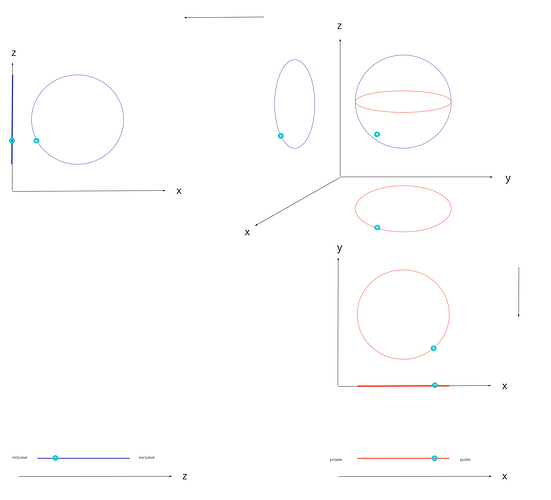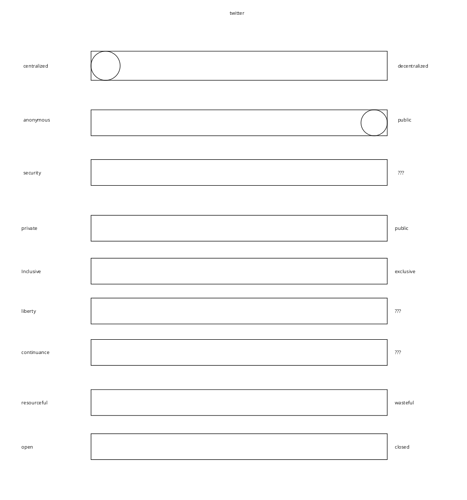Brand Design / Strategic Approach
11282018
Overview
This document serves as public documentation and overview into the strategic planning and tasks ordered to build a scalable (connected) brand. I think it is important to acknowledge the process in order for us to begin designing brands meaningfully.
Brand Architecture
Our core brand design philosophy of ‘Connected Brands’ is founded on a brand idea that has a purpose at its core, defining brand’s position in culture and role in people’s lives.
-
The Brand Story / Connected Communications
How is the brand is expressed in a way that creates scale and is defendable in culture? -
The Brand Idea / Connected Purpose
How does the brand create cultural tension that make it more relevant and valuable to real people? -
The Brand System / Connected Ecosystem
How are the brand’s products and services connected to amplify value in the ecosystem?
This framework should then lead to inspiring briefs to create products, services and communications.
Brand Foundations
Brand foundations provide the context for branding. The following aspects should be explored as the starting point for deciding whether to evolve or radically reposition – or creating new brand. Utilise and build on work done in a discovery phase.
-
Brand Roots: define the elements of the brand that have historically provided competitive advantage and differentiation. Decide which to keep based on how unique they are to the brand. Focusing on elements that demonstrate category leadership and product quality.
-
Key Trends: define the macro trends that are creating disruption in the category and changing customer behaviour. Prioritise the trends which are strategically, filtering those specific to tactical communications, product and service design.
-
Competitive Threats: define the things that competitors are doing that are threatening scale, value and equity. Focus on areas of commoditization for the brand.
-
Key Trends: define the macro trends that are creating disruption in the category and changing customer behaviour. Prioritise the trends which are strategically, filtering those specific to tactical communications, product and service design.
-
Product & Service Advantages: define what the brand does well in terms of their product and services. These advantages ensure the brand positioning amplifies areas of positive customer experience.
-
Opportunities for Growth: define what the brand needs to do to overcome competitive threats, emerging disruption and key weaknesses to create growth.
Brand Audience
Understanding the audience focuses brand development on a deep understanding the customers that will drive growth. Profiling and observing these audiences is the foundation for the pivot insights that ensure the brand is differentiated and has a defendable role in culture.
-
Audience Profiles: define profiles for each of the audiences that will drive growth or need to be defended from competitive threats. What are their needs from the category? What is attitudes and behaviours does the brand need to understand? What are their primary goals? What motivates them? What are the key barriers and pains they experience?
-
Pivotal Insight: The aim is to uncover pivotal insights that can be used to define a unique role for the brand in culture – and challenge category-normal thinking.
-
Through research and observation, strategists should define insights for each audience that gets to the root of their attitudes and behaviour. This is often a strongly held belief that describes the ‘why’ that sits behind their goals and motivations.
-
Cultural tensions provide a rich territory for defining pivotal insights; because opposing view points often have the greatest influence customer attitudes and behaviour.
-
Brand Purpose
Brand purpose is the most important aspect of branding. As a strategic approach, the input to defining a brand purpose are the Pivotal Insights. A 2X4 with strategy, tech and creative leads would be the first stage before a wider workshop. The aim is to define:
-
Brand Point-of-View: define a differentiated opinion or view based on the pivotal insight; this should ideally, a strong, clear statement on a cultural tension. This is what the brand thinks, Nike for example “Just Do It”
-
Brand Purpose: define the key role that the brand can play in our customer’s life, ideally helping them better achieve their goals in the category. This could be to change attitudes, behaviours or customer’s life experience. A brand purpose should be a simple, clear behaviour that defines what the brand does, for example “If you have a body, you are an athlete.”
-
Brand Story and System: define how the brand purpose is expressed in relation to storytelling (what the brand says) and system design (what the brand does). In simple terms, these expressions provide the central direction for communications vs. product and service design – though will extend into other areas such as events. Nike again, “Creating tools to empower athletes”
Running Category Example: Unique Running Product: Nike Flyknit / Running Tech Apparel Digital Product: Nike+ Running App Running Campaign: ... Events / Social: Nike+ Run Club Retail: Nike Running
Brand Territories
Brand territories are important when redefining or creating a new brand. The aim is to define a space for the brand to execute its purpose.
In essence, brand territories are ‘strategic creativity’ that allow the team to explore different options for naming, visual design, tone of voice, experience design etc.
The output of this strategic step is a range of potential brand expressions, all founded on the same root purpose, that can be validated through customer testing.
-
Brand Elements: define 3-4 behaviours that will connect the brand purpose to audiences needs and goals. Ideally, expanding traditional single archetype into a 3D personality. Each brand element should have the key drivers for audience engagement and aligned tactical elements of the brand story and system.
-
Brand Territories: Using the brand elements define a range of brand territories. This is normally done by weighting each element with a higher focus or priority. This should provide 3-4 territories each with a focal brand element, using the other brand elements as support.
-
Value Proposition: For each brand territory, define a value proposition that clearly expresses the brand for the audience. This should combine the brand purpose with a set of clear needs and goals. The value proposition is the external expression of why the audience should want the brand and, its products and services.
Brand Design
… from this point, we write a brief to enable cross-functional teams can work to define:
1. Brand Territory
2. Visual and Verbal Identity
3. A connected communications (storytelling) and experience (system) platform.
Customer Based Brand Equity Model
To be consistent to the examples above here is what the CBBE of Nike would output to below:
- Resonance: People are loyal to the brand or loyal to the sport shoe industry regardless of the brand
- Judgement: High quality and innovation profiled brand
- Feelings: Sense of achievement and able to do anything
- Performance: High Technical Performance
- Imagery: Symbol of status and culturally ‘cool’ in people’s point of view.
- Salience: Leader in the footwear industry
Conclusion
The process of building brands when done correctly can streamline our output of assets we create for the short and long term. This also ensures that everyone understands how/why the decisions have been made collectively.
Please research amongst your team or with the collaboration of Brand Design / Marketing beforehand so we have proper documentation and research for future-proofing.
This is available on our HackMD to steal / edit freely here

